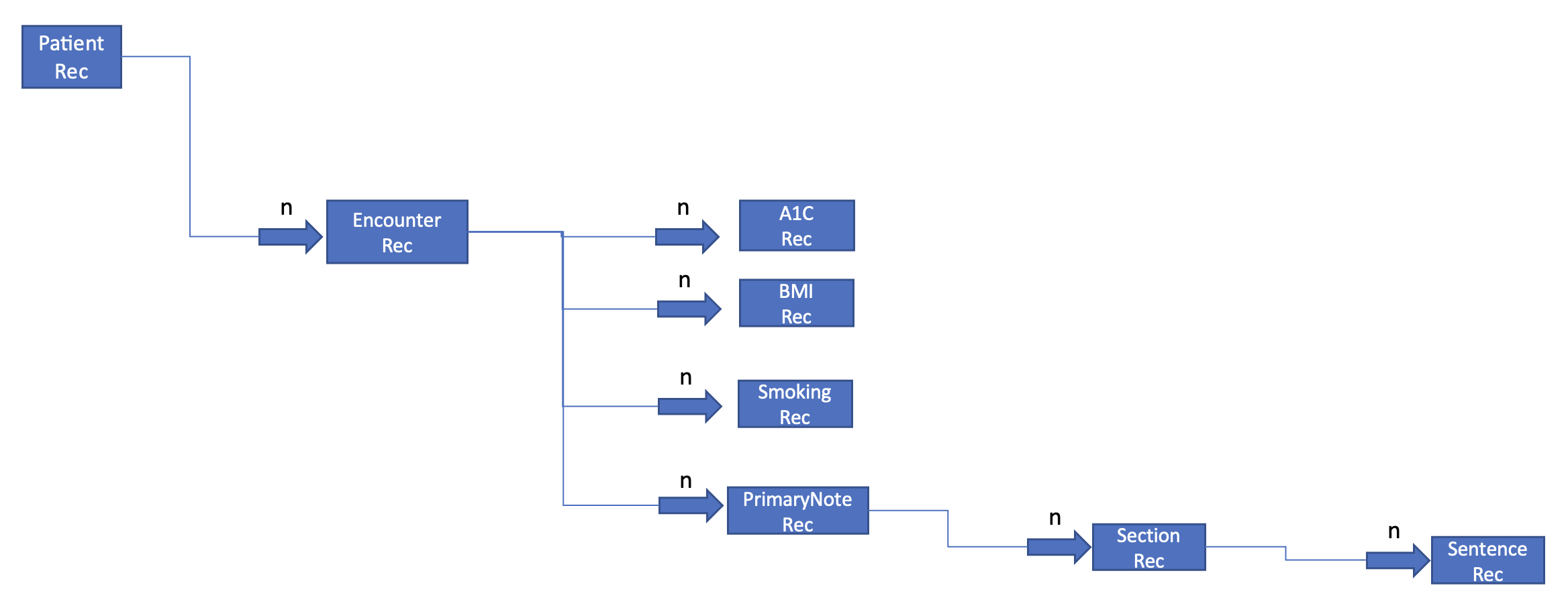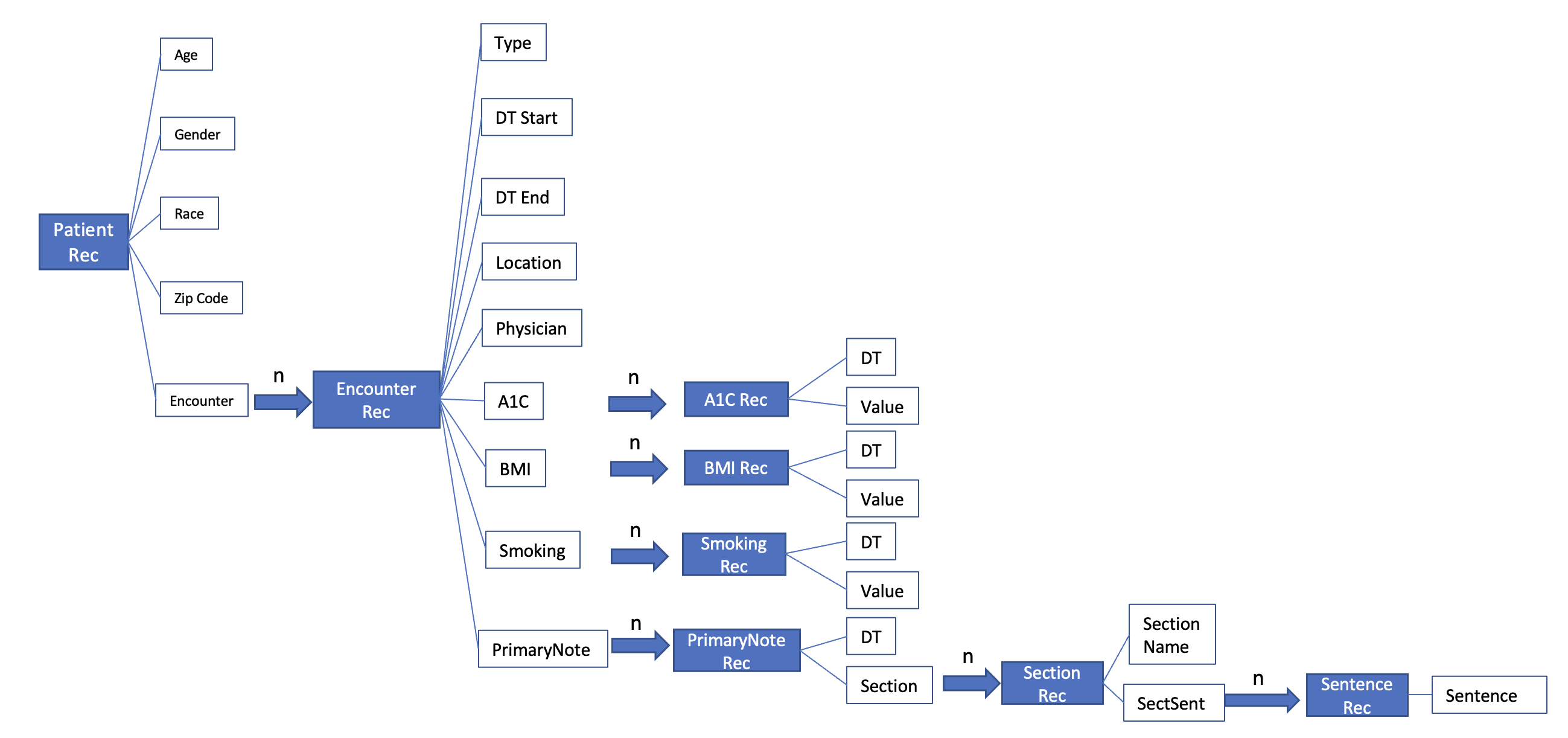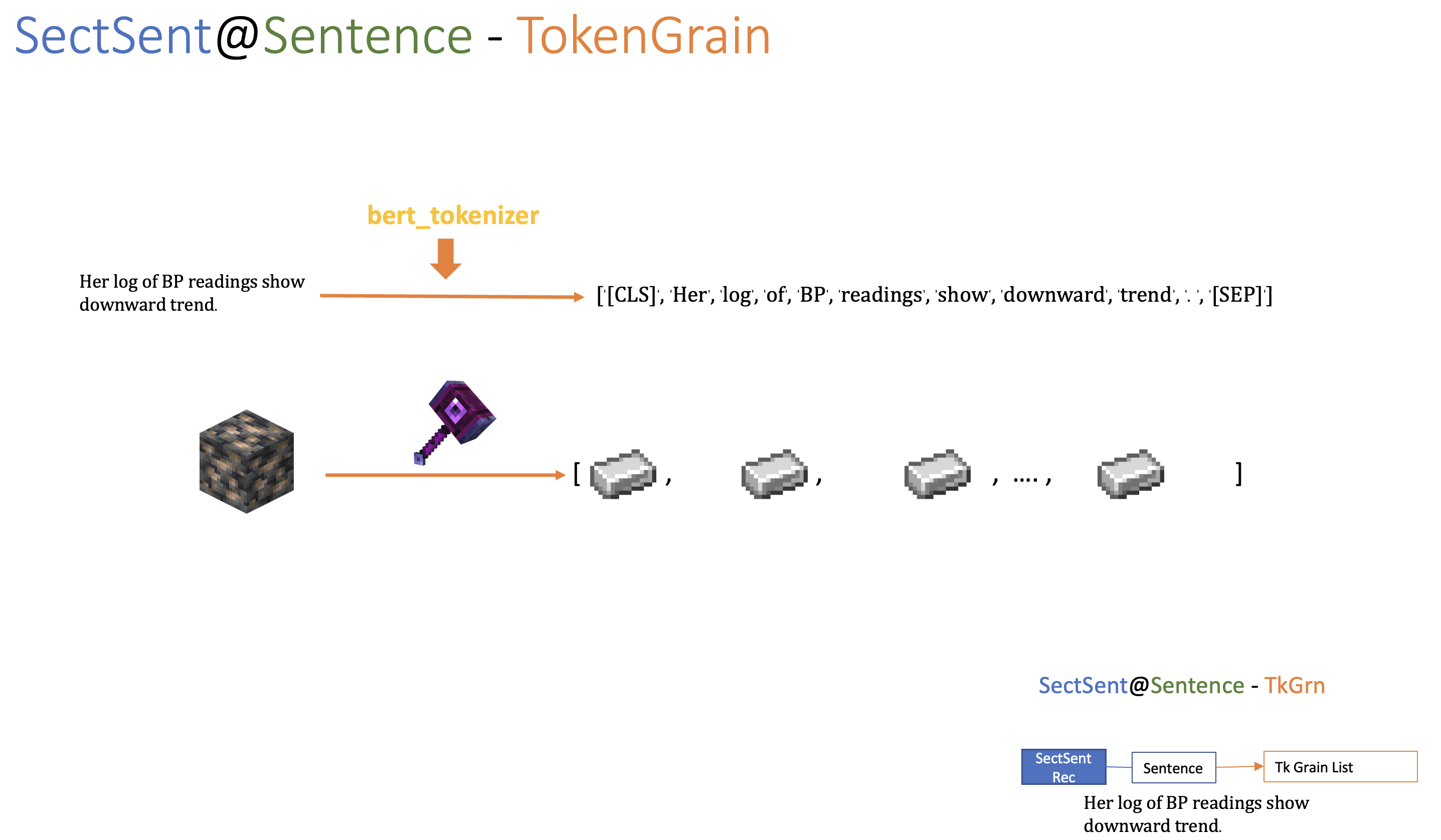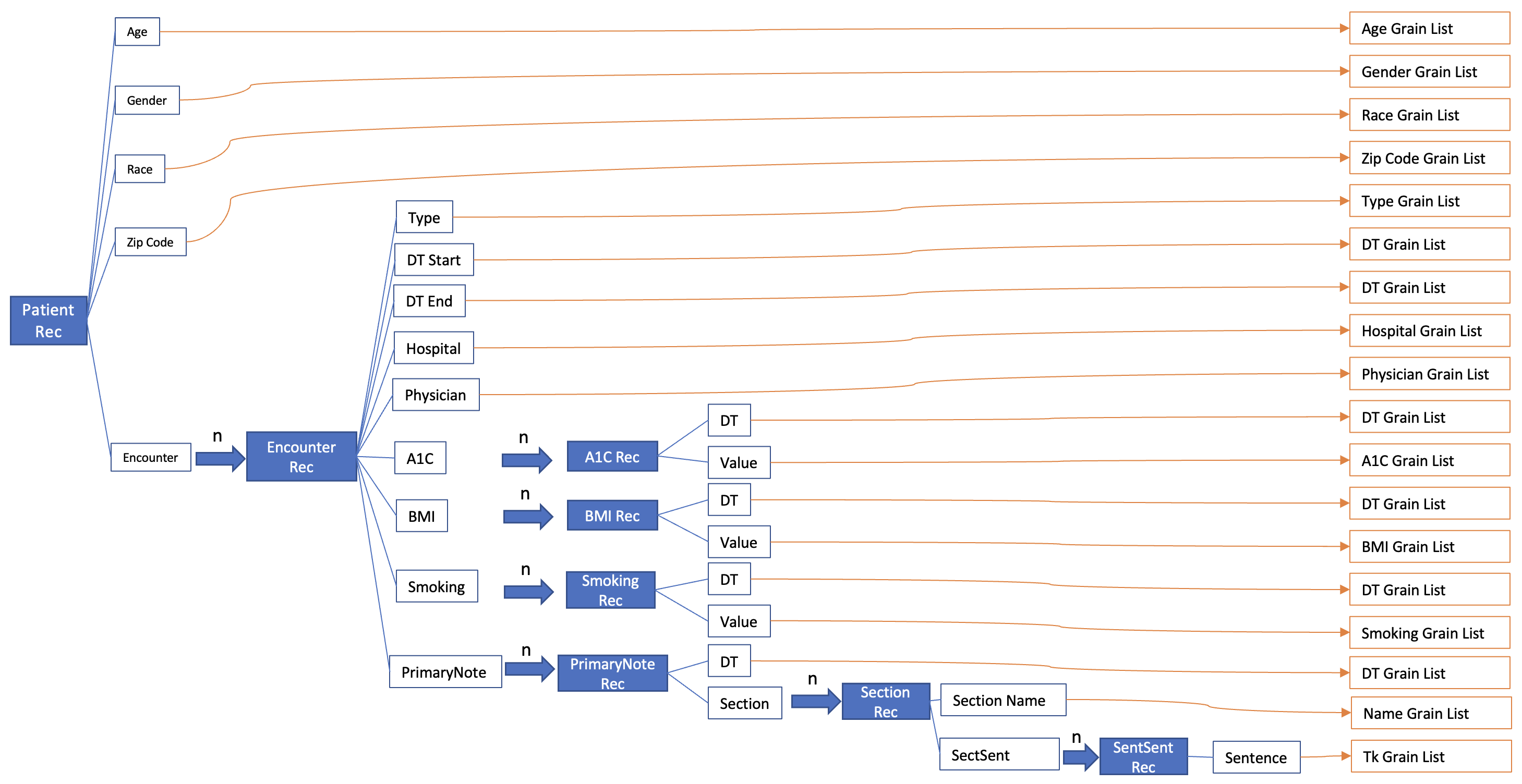This is a repo to show the idea of RecFldGrn, which indicates the Record-Field-Grain framework.
-
Record: A record type can have many potiential multipleFields (or columns). The records can be multiple. For example, one patient can have multipleA1C Record, orDiagnosis Record. But one patient cannot have multipleAge Records (Given one index date, in some cases, we can convertAgeto records, too). In the most case, we treatAgeas the field for thePatient Record, similar toRaceandGender. -
Field: A field describes a dimension of a record (It is more like a column). -
Grain: Given the raw value from a record's field, leverage afldgrn_fnto convert the raw value to a list of fine-grained elements, which contains richer information to the outcome.
This repo contains a simulated dataset to demonstrate how RecFldGrn framework works.
The Unit of Observation is a patient. So we started with a Patient Record.
One Patient Record can have multiple Encounter Records.
One Encounter Record can have multiple A1C Record, BMI Record, Smoking Record, and Primary Note Records.
Field is a dimension to describe a record. You can also regard a field as a column. For one record, we need multiple fields (dimensions) to describe it.
Then we will have a list of Rec-Fld.
Given a record, and one field of it, (Rec@Fld) we can get the raw value (from the raw database or the raw dataset).
However, the raw value itself might not be that useful for our purpose, we might make a list of fine-grained elements from it to generate more uesful information.
Here is one example: PatientRec@ZipCode.
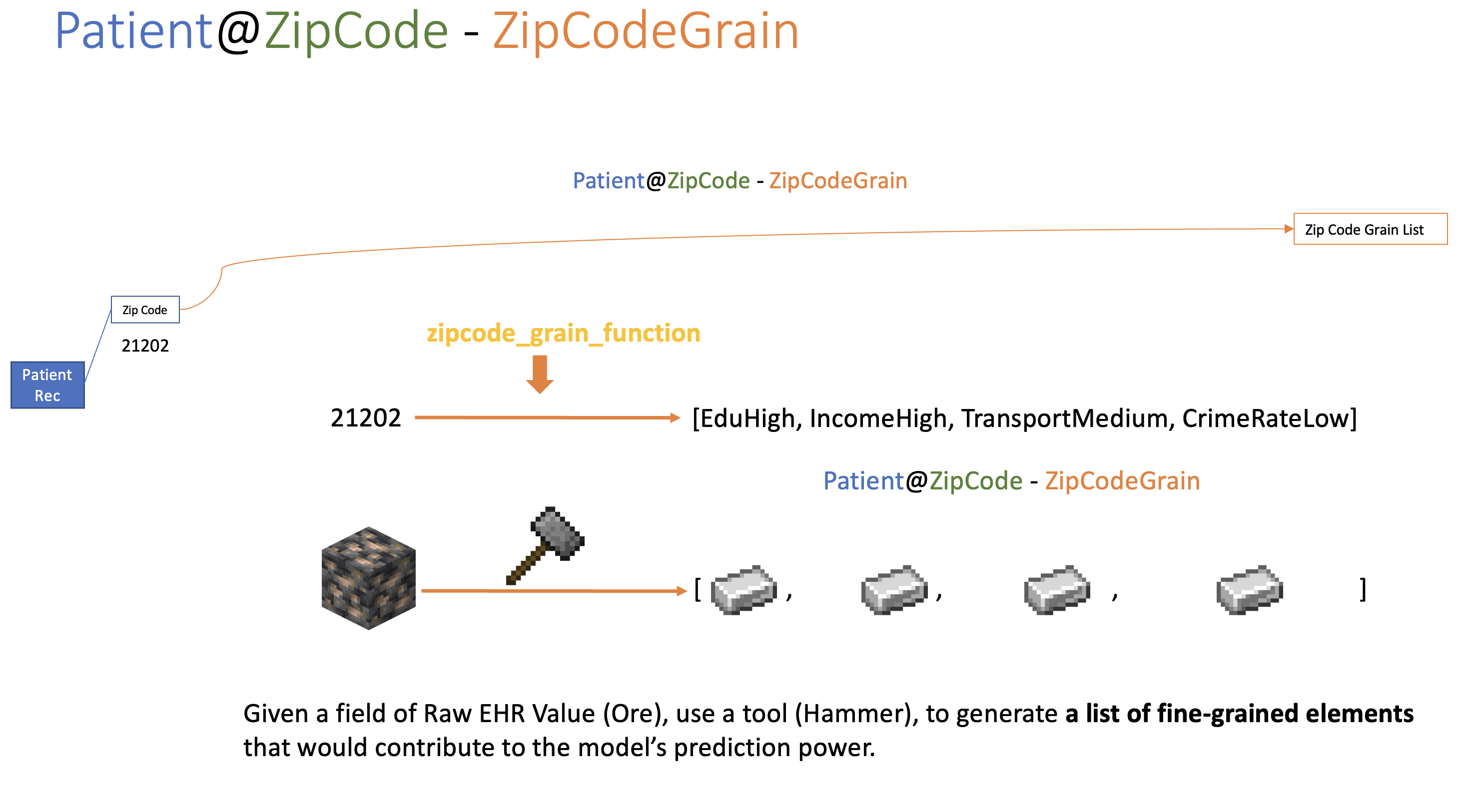
Here we use the fldgrn_fn (The hammer) to get the fine-grained elements (we call it grain list) from the raw data.
Acutally, we can have different and more powerful "Hammers".
We can also leverage ChatGPT to get sentence label list.
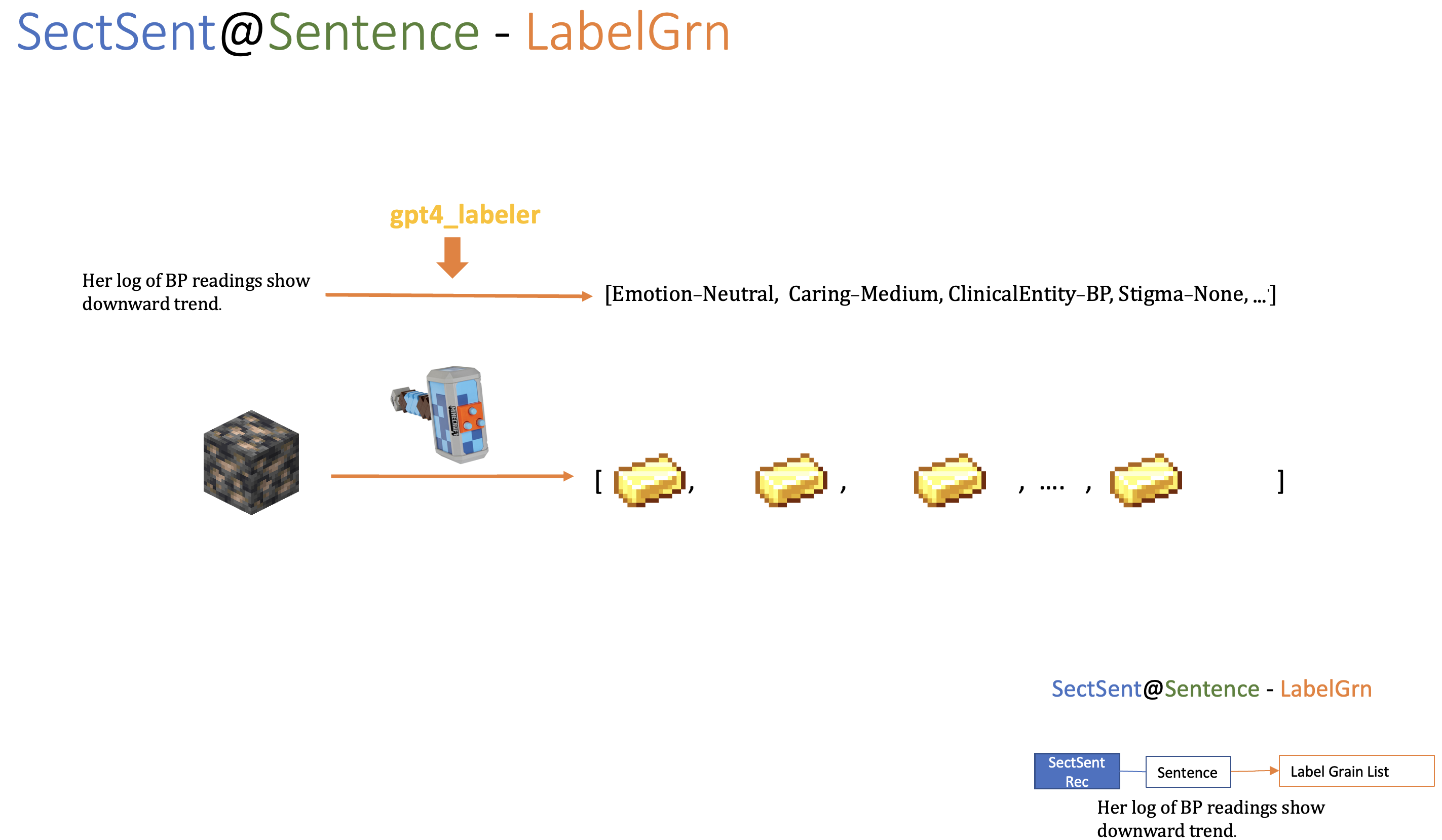
In the end, we get the grain list for each of the rec@fld.
